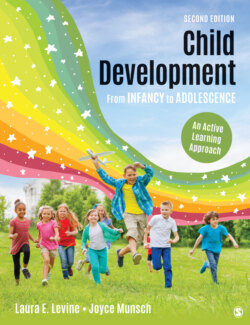Читать книгу Child Development From Infancy to Adolescence - Laura E. Levine - Страница 132
На сайте Литреса книга снята с продажи.
Modern Applications of Dynamic Systems Theory
ОглавлениеDynamic systems theory considers characteristics of the whole child, including the nervous system, the musculoskeletal system, and the child’s motivation or readiness, the environment, and the nature of the task itself when planning an intervention (Darrah et al., 2011; Sauve & Bartlett, 2010). In recent years, it has been used to promote the understanding of many different aspects of child development, including cognitive development (Samuelson, Jenkins, & Spencer, 2015). This theory helps us understand that systems of the body interact in complex ways. While the brain affects the body, the body also affects the brain in an ongoing dialogue that continues over time (Spencer, Austin, & Schutte, 2012). This interaction was demonstrated in one study in which adults saw a photo of a pitcher such as the one shown in Figure 2.7, with the handle either on the right or the left of the pitcher, and pressed a button to answer the question “Is this a pitcher?” They responded more quickly when the button for the “yes” response was on the same side of their body as the handle for the pitcher (Thelen & Smith, 2006). People recognized an object more quickly when the response they made was compatible with their action on the object (picking up the pitcher). Action and visual perception are thus connected and influence one another.
Description
Figure 2.7 Senses and action interact.
